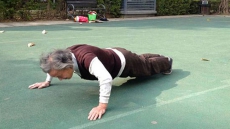Some idea of basic face structures and shapes can be helpful while applying make-up. Not every kind of make-up suit every face. It is important to know about what suits which face type and in the right balance. Use of correct techniques and tools can help achieve the best results. Here's what goes well with the most common face shapes.
1. Round
This face shape makes you look youthful. Bronzer should be applied on the entire outer parameter of the face and under the cheekbones. Highlight on the bridge of the nose, center of the forehead, high points of the cheeks, underneath the brow bone, Cupid's bow, and on the chin.
2. Heart Shape
This face shape is easy to balance. Apply bronzer on the forehead blending out towards the temples and underneath the cheekbones. Highlight on the bridge of the nose, cheekbones, underneath the brow bone, onto the jawline, Cupid's bow, and on the chin.
3. Square Shape
Forehead, cheekbones and jawline are almost of the same width. Soften the strong lines by contouring temples and jaw areas, apply blush in the hollows of the cheeks. Also, highlight high points of cheeks and temples.
4. Oval Shape
There is equal distance between chin to forehead and cheek to cheek. Bronzer should be applied at the top of the forehead, along the bottom of the cheekbones blended up toward the temple, under the chin blended up, and across the bridge of the nose. Highlight the cheekbones, on the brow bone, the tip of the nose, and Cupid's bow. Avoid highlighting the forehead and chin, which will add height.
5. Triangular/Pear Shape
The face has a broad jawline and cheeks can be wider than the eye area. Contour the sides of the cheek area and add a little under the eyes if necessary to sculpt the cheekbones and bring them forward. Highlight the forehead to widen and bring forward, and add a little to the chin.
Inputs by Pooja Malhotra, Customer Experience Trainer at KIKO Milano




